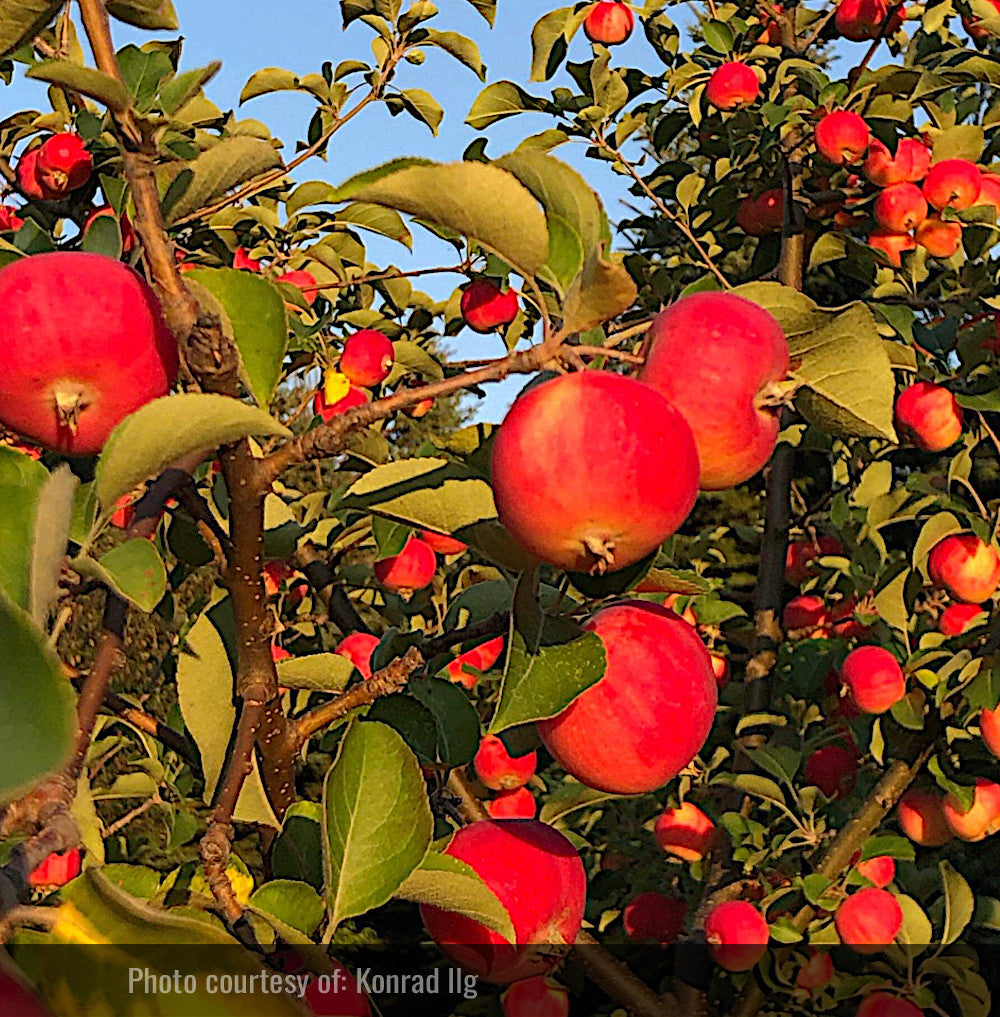Oak Summit Nursery
Palmetta Apple Tree
Palmetta Apple Tree
Couldn't load pickup availability
Palmetta is a Russian hybrid cultivar with a spreading growith habbit, the name is derived from palmette meaning it would be a good apple for espalier. It originated from the Central Siberian Botanical Garden in the Russian Academy of Sciences in Novosibirsk. It was introduced to Alaska from a batch of scionwood in the late 1990s and has since caught the attention of orchardists in cold regions due to its remarkable hardiness and unusual growth habit.
It's a cross between ‘Belfleur-Kitajka’ with Malus baccata (the Siberian crab apple). ‘Belfleur-Kitajka’ itself is a famous Michurin selection, the eminent plant breeder Ivan Vladimirovich Michurin (1855–1935). Michurin was a pioneering horticulturist who sought to expand fruit cultivation into the colder, more challenging climates of the Russian Empire (and later the Soviet Union). Belfleur-Kitajka was a cross between the French ‘Bellefleur’ apple and a hardy "Kitajka" (Chinese-type crab apple). Combining ‘Belfleur-Kitajka’ with M. baccata introduced extreme cold hardiness, high disease resistance, and a unique morphological character to the offspring.
The trees have medium sized fruit that will take on a rounded oblong shape. They're light yellow with a raspberry blush. Harvest time is generally from early-mid September through October. The trees consistently yield high quantities of fruit with a long shelf life. It's cold hardy to zone 3 and scab resistance.
https://vniispk.ru/varieties/palmetta
Cold Hardiness: Zone 3
Materials
Materials
Dimensions
Dimensions
Care information
Care information


